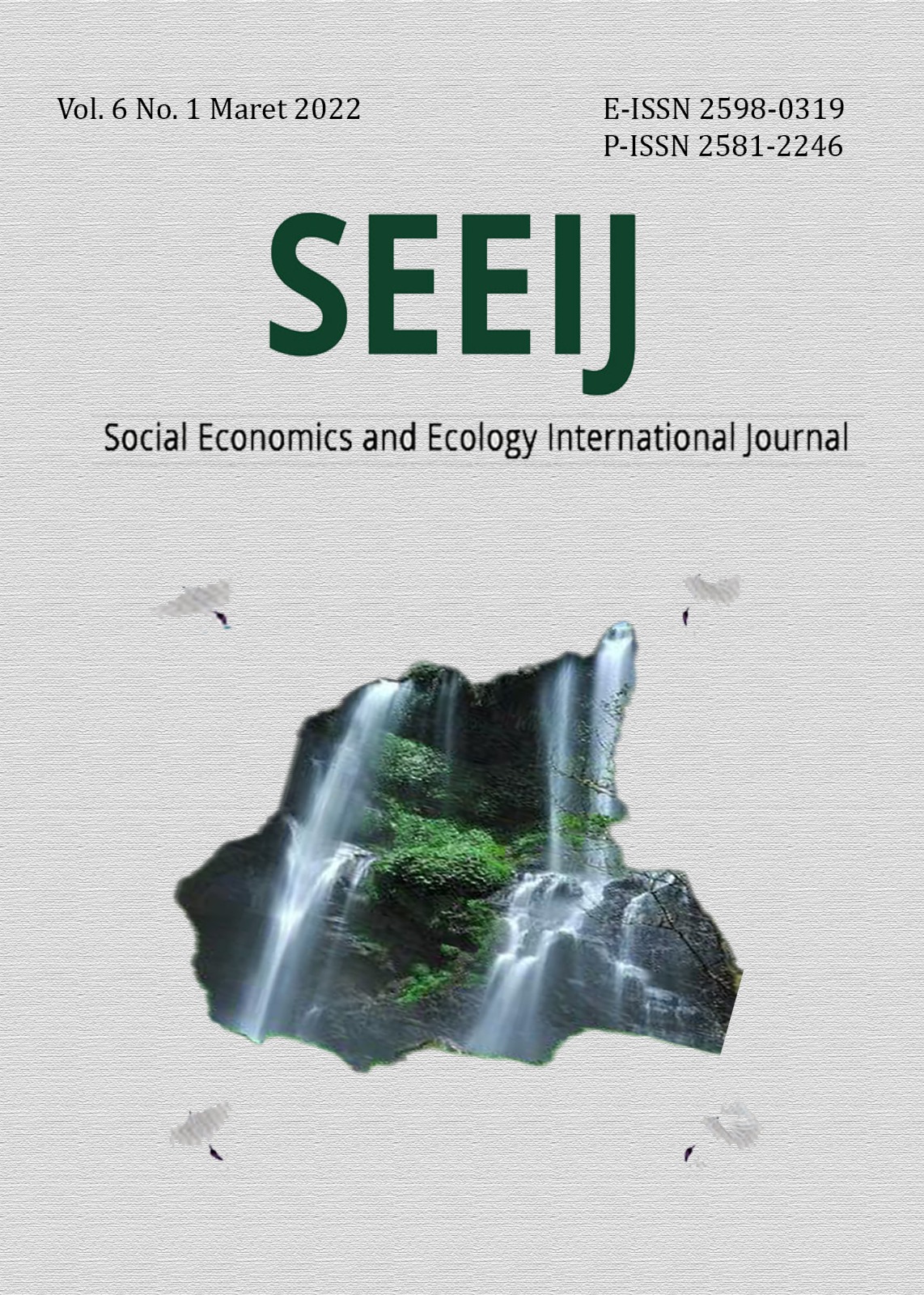STORYTELLING AS A MARKETING COMMUNICATION STRATEGY FOR “PRIMADONA-FOOD†BEKASI
DOI:
https://doi.org/10.21512/seeij.v6i1.9318Keywords:
Communication, Storytelling, Marketing, Social MediaAbstract
Storytelling strategies are increasingly being used in an effort to get the attention and prospects of customers. The technique of distributing brand content, using parameters such as broadcast time, interactivity, and the type of information it conveys. Effective digital campaigns require a high level of creativity and often involve developing a storyline around the brand. The owner of a micro business, a food product with the Primadona-food brand, which initially had few customers, then, in March 2018, I directed to use a storytelling strategy in marketing on social media. This strategy has proven to be successful in increasing the number of Primadona food consumers, to reach consumers and customers overseas. The development of creativity in digital strategies also serves to foster long-term relationships and loyalty to the Primadona-food Bekasi brand, consumers interact with the brand, the higher level of brand awareness. Consumer confidence can increase, if the story is relevant to consumers, offers concrete details, engaging video or audio, and promotes positive values. The value of digital storytelling as the main tool for communicating the experience of a brand is indeed very useful in marketing activities.
References
Ashley, C., & Tuten, T. (2015). Creative strategies in social media marketing: An exploratory study of branded social content and consumer engagement. Psychology & Marketing, 32(1), 15–27.
Baldwin, S., & Ching, Y. H. (2017). Interactive storytelling: Opportunities for online course design. Techtrends, 61(2), 179–186.
Bassano, C., Barile, S., Piciocchi, P., Spohrer, J. C., Iandolo, F., & Fisk, R. (2019). Storytelling about places: Tourism marketing in the digital age. Cities, 87, 10–20.
Brechman, J. M., & Purvis, S. C. (2015). Narrative, transportation and advertising. International Journal of Advertising, 34(2), 366–381.
Burgess, J. (2006). Hearing ordinary voices: Cultural studies, vernacular creativity and digital storytelling. Continuum, 20(2), 201–214.
De-Vries, L., Gensler, S., & Leeflang, P. S. H. (2012). Popularity of brand posts on brand fan pages: An investigation of the effects of social media marketing. Journal of Interactive Marketing, 26(2), 83–91.
Dessart, L., & Pitardi, V. (2019). How stories generate consumer engagement: An exploratory study. Journal of Business Research, 104, 183–195.
Dias, L., & Dias, P. (2018). Beyond advertising narratives: Josefinas and their storytelling products. Analisi-Quaderns de Comunicació I Cultura, 58, 47–62.
Escalas, J. E. (1998). Advertising narratives: What are they and how do they work. In B. B. Stern (Ed.), Representing consumers: Voices, views, and visions. Routledge, 267–289.
Escalas, J. E. (2004). Narrative processing: Building consumer connections to brands. Journal of Consumer Psychology, 14(1–2), 168–180.
Faraoni, M., Rialti, R., Zollo, L., & Pellicelli, A. C. (2019). Exploring e-loyalty Antecedents in B2C e- Commerce: Empirical results from Italian grocery retailers. British Food Journal, 121(2), 574–589.
Hennig-Thurau, T., & Walsh, G. (2003). Electronic word-of-mouth: Motives for and consequences of reading customer articulations on the Internet. International Journal of Electronic Commerce, 8(2), 51–74.
Hinz, O., Skiera, B., Barrot, C., & Becker, J. U. (2011). Seeding strategies for viral marketing: An empirical comparison. Journal of Marketing, 75(6), 55–71.
Ho, J. Y., & Dempsey, M. (2010). Viral marketing: Motivations to forward online content. Journal of Business Research, 63(9–10), 1000–1006.
Hollebeek, L. D., & Macky, K. (2019). Digital content marketing’s role in fostering consumer engagement, trust, and value: Framework, fundamental propositions, and implications. Journal of Interactive Marketing, 45, 27–41.
https://www.facebook.com/dendengbaladoprimadona/
Kornberger, M. (2010). Brand society: How brands transform management and lifestyle (Cambridge & U. Press. (eds.)).
Lee, D., Hosanagar, K., & Nair, H. S. (2018). Advertising content and consumer engagement on social media: Evidence from Facebook. Management Science, 64(11), 5105–5131.
Li, J., Zou, S., & Yang, H. (2019). How does “storytelling†influence consumer trust in we media advertorials? An investigation in China. Journal of Global Marketing, 32(5), 319–334.
Maslowska, E., Malthouse, E. C., & Collinger, T. (2016). The customer engagement ecosystem. Journal of Marketing Management, 32(5–6), 469–501.
Miller, C. H. (2004). Digital storytelling. A creator’s guide to interactive entertainment. In Focal Press.
Pera, R., & Viglia, G. (2016). Exploring how video digital storytelling builds relationship experiences. Psychology & Marketing, 33(12), 1142–1150.
Schultz, C. D. (2017). Proposing to your fans: Which brand post characteristics drive consumer engagement activities on social media brand pages? Electronic Commerce Research and Applications, 26, 23–24.
Spiller, L. D. (2018). Story-selling: Creating and sharing authentic stories that persuade. Journal for Advancement of Marketing Education, 26(1), 11–17.
Van-Laer, T., De-Ruyter, K., Visconti, L. M., & Wetzels, M. (2014). The extended transportationimagery model: A meta-analysis of the antecedents and consequences of consumers’ narrative transportation. Journal of Consumer Research, 40(4), 797–817.
Zollo, L., Filieri, R., Rialti, R., & Yoon, S. (2020). Unpacking the relationship between social media marketing and brand equity: The mediating role of consumers’ benefits and experience. Journal of Business Research, 117, 256–267.
Downloads
Published
How to Cite
Issue
Section
License
Copyright (c) 2023 Laskarko Patria

This work is licensed under a Creative Commons Attribution-NonCommercial 4.0 International License.
The Authors submitting a manuscript do so on the understanding that if accepted for publication, copyright of the article shall be assigned to SEEIJ Community Development Academic (CDA) Bina Nusantara University as publisher of the journal.
Copyright encompasses exclusive rights to reproduce and deliver the article in all form and media, including reprints, photographs, microfilms and any other similar reproductions, as well as translations. The reproduction of any part of this journal, its storage in databases and its transmission by any form or media, such as electronic, electrostatic and mechanical copies, photocopies, recordings, magnetic media, etc., will be allowed only with a written permission from SEEIJ Community Development Academic (CDA) Bina Nusantara University.
SEEIJ Community Development Academic (CDA) Bina Nusantara University, the Editors and the reviewer make every effort to ensure that no wrong or misleading data, opinions or statements be published in the journal. In any way, the contents of the articles and advertisements published in the SEEIJ are sole and exclusive responsibility of their respective authors and advertisers.

This work is licensed under a Creative Commons Attribution-NonCommercial 4.0 International License.









